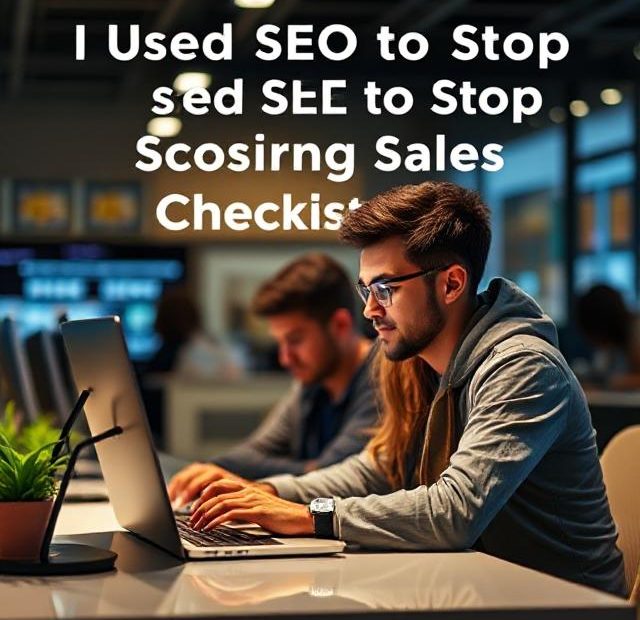You ever get that sinking feeling? Like, you watch customers hit the checkout page… and then poof—they vanish. I lived that, often. For months.
And I used to think: “Maybe it’s the price, or maybe folks just change their minds?” But turns out, a big part of it? Was my SEO. Yeah, weirdly. I had no clue how much it mattered till I fixed it and saw people actually buying.
Let me just kinda walk through what worked for me. Some stuff might surprise you, it did me.
Bring in People Who Actually Wanna Buy (Not Just Look)
First off—this was big—I wasn’t targeting shoppers. I was bringing in readers, browsers, curious scrollers. Not buyers.
Switched things up. Started using keywords that said stuff like “buy now” or “fast shipping” in them. And I went long-tail—”best wireless keyboard for gaming under $100″ kinda thing, y’know?
It’s all in the search intent, I figured out. Some people wanna learn. Others, they’re ready to hit that “Pay Now” button. I want those second ones.
Product Pages—They Weren’t Helping Me. Fixed That Fast.
I had these weak, copy-paste product pages. Thought they were fine. Looked pretty. But Google didn’t like ‘em. Neither did shoppers, apparently.
So I rewrote ‘em all. Made descriptions that sounded like me, added stuff like how it feels, when to use it, why it’s better. Not just bullet points from the supplier.
Oh—and the photos? Terrible lighting. Fixed that too. Made ‘em look real, lived-in. You can’t imagine the difference it made. More time spent on page, more add-to-carts, more yes.
Site Speed, Wow. I Slept on That for So Long
Man, my site was slow. I didn’t even realize until I checked PageSpeed Insights one day out of boredom.
Compressed all my images after that. Lazy-loaded most of the gallery stuff. Changed hosts. Even cleaned up some code I didn’t understand (probably broke stuff temporarily, not gonna lie).
The bounce rate dipped so quick, I actually thought my analytics were broken. They weren’t.
Meta Tags? Even for Cart Pages? Oh, Heck Yes.
At first I thought meta descriptions were just for blog posts. Nope. They matter on product pages, cart previews, even your homepage. Maybe even more than I realized.
Instead of boring ones like “Shop now,” I started writing stuff like “Fast, secure checkout with free shipping. Shop with confidence.” You feel it?
Somehow that tiny sentence made people stay. They didn’t back out halfway through. And I barely changed anything else. Wild.
Bring the Abandoners Back? SEO’s Got a Trick for That Too
So like, people leave. That’s life. But I found ways to get ‘em back without annoying popups.
Started making blog content that answered their fears. One post I wrote—“Why Our Organic Blankets Cost More (and Why They’re Worth It)”—it brought back people who’d bailed earlier.
Also used internal links more. My product pages started linking to testimonials, review videos, return policy. More touchpoints = more trust.
Some of them came back days later. I saw it happen in analytics.
Mobile Was A Whole Thing I Ignored Like a Dummy
Ugh, okay—this was embarrassing. My mobile site sucked. I never checked it ‘cause I always worked on desktop.
But turns out, 75% of my traffic was on phones. 🤦 So I cleaned it up. Switched themes. Added better spacing. Bigger buttons. Shorter forms.
Used srcset for images too—so mobile didn’t load giant desktop files. It all helped. A lot.
People who used to drop off halfway through checkout? Stayed. They bought.
Voice Search… Kind of a Sneaky Opportunity?
I didn’t see this one coming. But voice search keywords? They’re different. Way more casual. Like someone talking.
So instead of “men’s sneakers,” I used stuff like “where can I buy comfy men’s sneakers near me” in my alt text, FAQs, even some headings.
Guess what? It actually brought traffic. Not a ton at first—but high-converting traffic. Less noise, more people who had already made up their minds.
Put Trust All Over the Place (Search Results Included)
Reviews. Star ratings. “HTTPS” showing green in the browser. Rich snippets. All that jazz—I didn’t think it mattered that much.
It does. It all screams safe to buy. Which is exactly what nervous shoppers need to see.
I added Schema markup to my product pages. Suddenly, stars and prices started showing up right there on Google. You think people don’t notice that? They do.
More clicks. More people finishing what they started.
Data Don’t Lie—So I Started Actually Using It
Final thing—I got real nosy with my data. Google Search Console, Analytics, Hotjar heatmaps… I checked them all.
Some product pages had insane exit rates. I dug in. Usually a tiny thing was broken. A size chart didn’t load. A price didn’t match the cart. Stupid, fixable stuff.
I wouldn’t have known without the numbers.
Final Words Before You Go Fix Your Checkout
Cart abandonment? It’s not just about sending better emails. It’s about getting the right people to your site, making them trust you before they even add stuff to their cart, and keeping the whole experience smooth.
SEO helped me do that. Not overnight, but enough that I saw fewer ghost carts and way more “Thank you for your purchase” emails.
Start with small fixes—your top 5 product pages maybe. Rewrite them. Speed ‘em up. Make them sparkle. Then scale that.
Worked for me. Could work for you too. Also, you can learn more about E-commerce SEO here.
